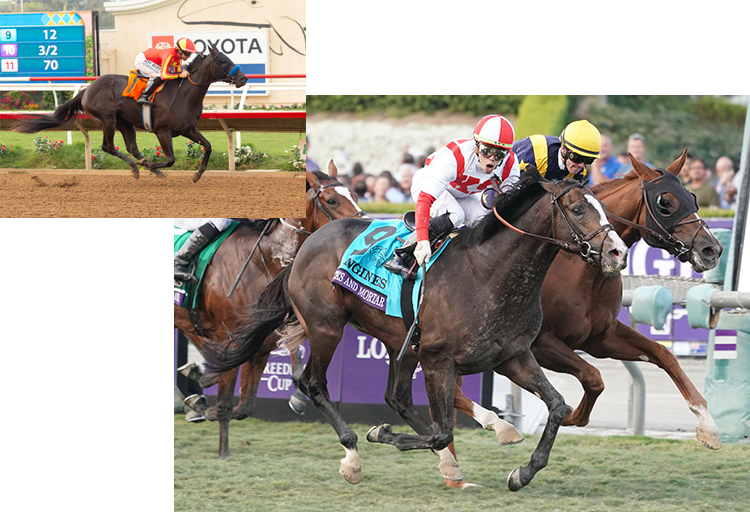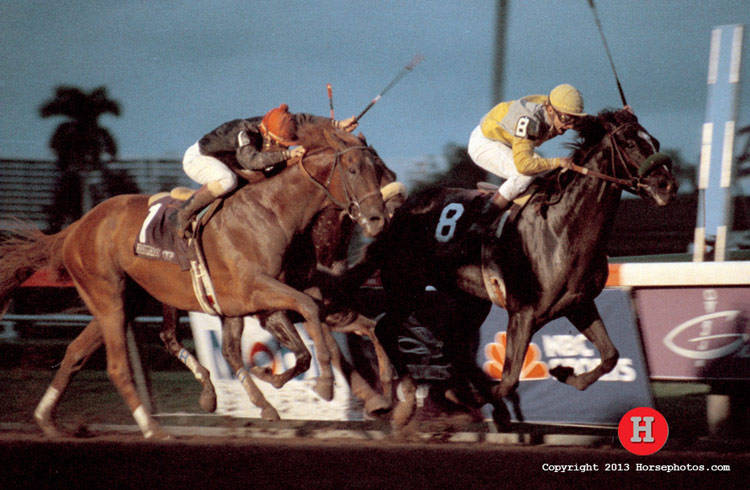

Stone Farm: For half of a century.

If you take care of the land,
the land will take care of you.

We’re trying to raise you a good horse.

We sell only what we raise.



Sunday Silence spent a lifetime in search of respect, on the track and in the breeding shed. In the end, he earned it.
“He was very good,” said Shug McGaughey, a Hall of Fame trainer who handled arch-rival Easy Goer. “I ran against him four times and he beat us three times. And I ran a pretty good horse at him.”
In the beginning, though, Sunday Silence was a colt no one wanted. He narrowly survived a virus as a weanling. Trainer Gary Jones once said his hind legs “were so crooked they looked like coat hangers.” Bill Christine, a sportswriter for the Los Angeles Times, described the same legs as being “shaped like parentheses.”
Arthur B. Hancock III tried to unload the unsightly youngster at the Keeneland yearling sale in 1987 only to buy him back for a mere $17,000. He later shipped him to Hollywood Park to make him available at an auction for unraced 2-year-olds. The presale reserve was set at $50,000; the bidding never came close. Hancock retained him for $32,000.
He took on partners and the decision was made to ship Sunday Silence back to Kentucky. He never made it. The driver suffered a fatal heart attack in Texas, and the van overturned. The horse somehow emerged unscathed and was returned to California to begin his career there for Charlie Whittingham, himself a Hall of Fame trainer.
Sunday Silence completed an inauspicious 2-year-old season with one victory in three starts.
“He was weedy in the beginning,” Hancock told the Los Angeles Times. “He reminded you of a skinny teenager.”
That skinny teen matured dramatically between two and three. Those hind legs still did not look like much, but boy could they move. He took an allowance race to begin his 3-year-old season and suddenly put himself front and center for the Kentucky Derby – and a much-anticipated confrontation with Easy Goer – by sweeping the San Felipe Stakes and the Santa Anita Derby.
Virtually all of the pre-Derby hype surrounded Sunday Silence’s vaunted East Coast foe. “With Easy Goer being the 2-year-old champion, he had come in as the now horse, the next Secretariat,” Christine said.
When Sunday Silence bested Easy Goer by 2 ½ lengths in the run for the roses, the outcome was attributed to a muddy track at Churchill Downs. When Sunday Silence prevailed against Easy Goer by a nose after a scintillating Preakness stretch duel, most observers credited Pat Valenzuela with outriding Pat Day, who later admitted he would have done things differently. When Easy Goer denied his West Coast rival the Triple Crown with an eight-length romp at his home course in the Belmont Stakes, Sunday Silence’s critics rejoiced.
Christine saw it differently. “Easy Goer loved Belmont. It was his track and his day,” he said. “He really drubbed Sunday Silence, but that track had a lot to do with it.”
